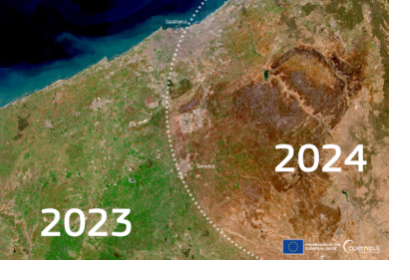For six years in Northern Africa and two years in Europe, persistent droughts have caused critical impacts such as water shortages and decreased vegetation growth. In the midst of winter, the ongoing drought is already having critical impacts, according to the report compiled by the JRC-run European Drought Observatory (EDO). Above-average temperatures, minimal precipitation, and warm spells affect the Mediterranean regions. It is also predicted that a warmer-than-usual spring is approaching. The severity of the droughts are expected to persist, raising concerns about severe impacts on agriculture, ecosystems, water availability, and energy production in many countries.
The impacts of droughts call for adaptation measures for water management, such as freshwater and drinking water resources. Southern Italy, southern Spain, Malta, Morocco, Algeria, and Tunisia were particularly affected by drought conditions in the first weeks of 2024. Water availability decreased, leading to water restrictions being implemented in several countries. With the approaching warmer-than-average spring and the low Alpine snowpack this year, a decreased amount of water in rivers than usual is expected. With reduced soil moisture, the susceptibility of wildfires in Europe is also expected to increase.
According to the UN's Intergovernmental Panel on Climate Change (IPCC), heatwaves and droughts will become more frequent and severe. Adaptation and mitigation strategies are needed, such as investing in drought early warning systems and water management strategies using new technologies.
Earth observation can contribute to monitoring and early warning of droughts. For instance, the Combined Drought Indicator (CDI) is used for assessing agricultural droughts, based on the amount of precipitation, soil moisture, and vegetation stress. The CDI shows the different states of the areas affected by droughts like warning, alert, recovery, temporary soil moisture, and vegetation recovery. This measure is useful for monitoring and early warning purposes.

True Color Composites, such as those from Copernicus Sentinel-2 imagery, can be used to assess and monitor drought visually as well.

The JRC and European Drought Observatory for Resilience and Adaptation (EDORA) partners also have collaborated on the development of the first European Drought Risk Atlas, aimed at assessing drought risk using innovative technologies.

